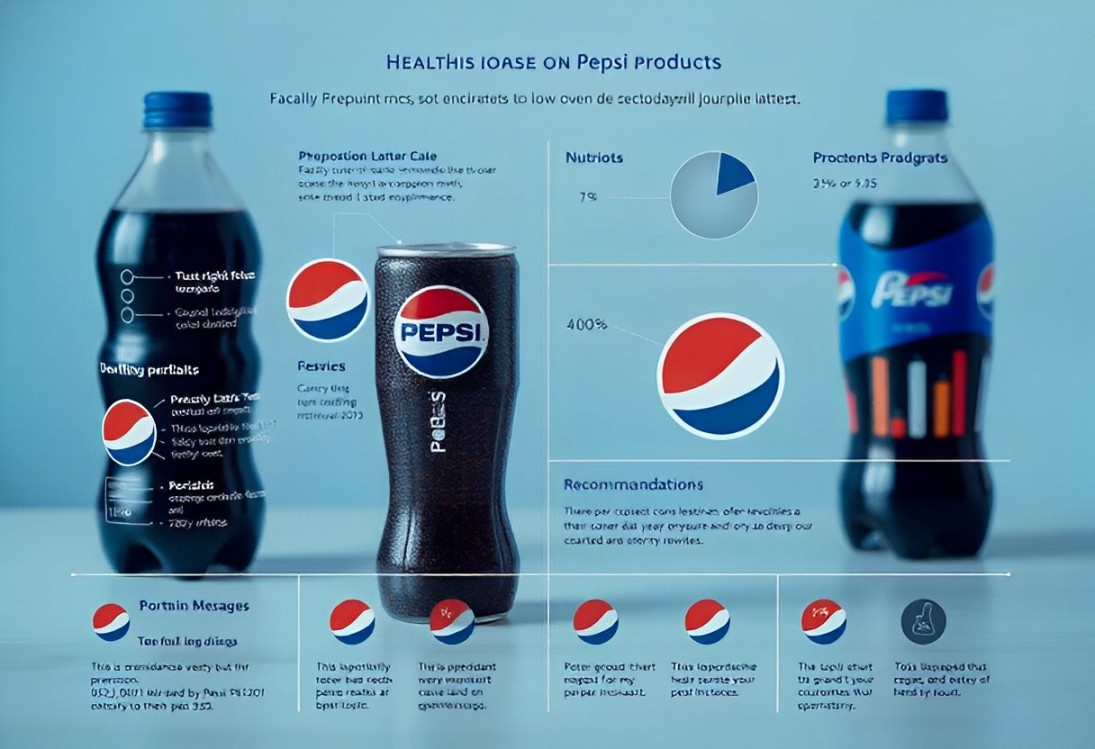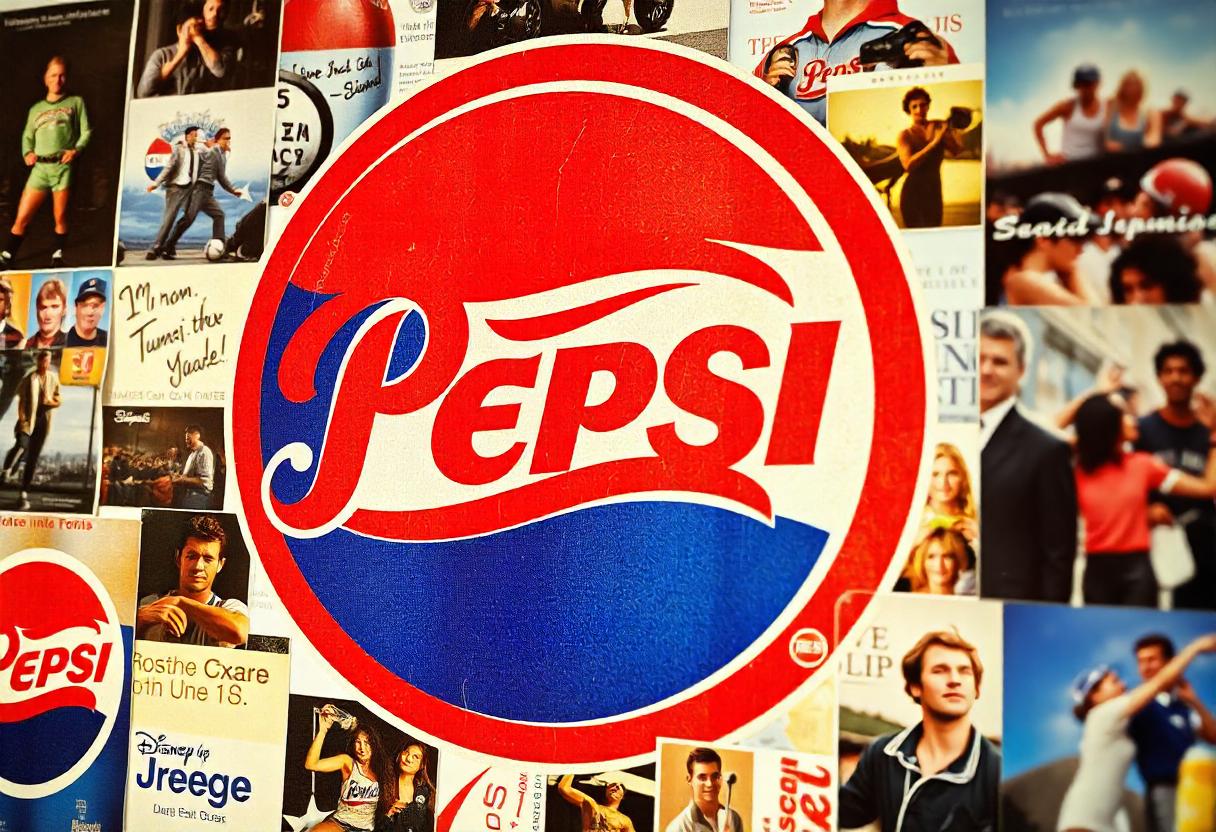It is not just a soft drink; it is a global phenomenon that has shaped beverage culture for over a century. This guide explores the extensive product lineup of this popular beverage, its diverse flavors, rich history, health implications, marketing strategies, community engagement, and sustainability initiatives. Readers can expect to learn about this iconic drink’s offerings and its impact on consumers and the environment.
What is Pepsi?
This refreshing drink is a carbonated soft drink produced by the renowned beverage corporation, PepsiCo. First created in 1893 as “Brad’s Drink,” it was rebranded as Pepsi-Cola in 1898. Over the years, this beloved refreshment has evolved into a classic with a unique flavor profile characterized by its sweetness and citrus undertones. The soda has become a cultural touchstone, frequently associated with youth, fun, and innovation.
Product Overview
Pepsi offers a diverse range of beverages that cater to a variety of consumer preferences. Here’s a quick overview of the core products:
- Regular Pepsi: The iconic original flavor known for its refreshing taste and balanced sweetness.
- Diet Pepsi: A zero-calorie option that provides the classic soda flavor without sugar, appealing to health-conscious consumers.
- Pepsi Zero Sugar: A bold, calorie-free variant that uses artificial sweeteners to deliver Pepsi’s taste without any sugar.
- Pepsi Max: A low-calorie drink available in select regions, known for its stronger flavor profile.
- Pepsi Black: An unsweetened version that provides a pure soda experience without added sugars or sweeteners.
- Pepsi Caffeine Free: A caffeine-free option that maintains the same great taste for those avoiding caffeine.
- Pepsi with Real Sugar: Made with cane sugar, offering a slightly different, nostalgic flavor profile.
Pepsi also offers a wide array of unique Flavors for those looking for a twist on the classic taste. Some popular ones include Wild Cherry, Vanilla, and limited editions like Mango and Lime.
Flavors Overview
This carbonated beverage is renowned for its adventurous approach to flavors, offering a variety of options that cater to different tastes. Some notable flavors include:
- Wild Cherry
- Vanilla
- Mango
- Strawberry
- Lime
- Blue
These flavors demonstrate the commitment of this iconic drink to innovation and consumer satisfaction, continually experimenting to find new and exciting tastes. To find more flavors, Click Here.
Energy Drinks Overview
PepsiCo also ventures into the energy drink market with its AMP Energy line, designed for consumers seeking a quick boost of energy. AMP Energy offers various flavors, each crafted to invigorate and refresh:
- AMP Energy Original
- AMP Energy Green Tea
- AMP Energy Tropical Punch
- AMP Energy Orange
- AMP Energy Strawberry
These energy drinks are fortified with B vitamins, caffeine, and other energy-enhancing ingredients, making them popular among athletes and active individuals.
International Variants and Related Beverages
The beverage company extends beyond traditional soft drinks, incorporating a variety of international products and related beverages that reflect local tastes and preferences:
- Crystal: A clear soda that was initially launched in the early 1990s and has seen nostalgic re-releases.
- Aquafina: The company’s bottled water brand offers a healthy hydration option that complements its beverage lineup.
- Gatorade: A leading sports drink designed to replenish electrolytes and provide hydration during athletic activities.
- Tropicana: A range of fruit juices catering to health-conscious consumers seeking natural beverages.
- Lipton: A line of iced teas, that combining the refreshing taste of tea with the convenience of ready-to-drink options.
Pepsi vs. Other Soft Drinks
When comparing this refreshing drink to other popular beverages, several factors come into play, including taste, ingredients, and brand perception. Here’s how it stacks up against its main competitors:
- Pepsi vs. Coca-Cola: The classic rivalry between these two beverage brands is rooted in flavor preference. Coca-Cola has a bolder, sweeter taste, while this popular soft drink is often described as having a citrusy flavor. Both brands have a loyal following, and taste tests often yield mixed results, depending on individual preferences.
- Pepsi vs. Dr Pepper: Dr Pepper is known for its unique blend of 23 flavors, giving it a distinctive taste that sets it apart. This soda offers a more straightforward flavor, appealing to those who prefer traditional beverages.
- Pepsi vs. Sprite: Sprite is a lemon-lime soda with a refreshing taste, while this popular drink has a more robust flavor. Consumers may choose between them based on their craving for a citrusy refreshment or a classic soda experience.
- Pepsi vs. Mountain Dew: Mountain Dew, also owned by this iconic brand, is known for its high caffeine content and citrus flavor, appealing to a younger demographic seeking an energy boost. Pepsi provides a more traditional taste, making it suitable for a wider audience.
- Pepsi vs. Other Diet Sodas: Diet Pepsi is often compared to other diet sodas, such as Diet Coke and Coca-Cola Zero Sugar. The taste differences are subtle but can influence consumer choice based on personal preferences.
Overall, the diverse flavor offerings and competitive marketing strategies of this beverage brand have helped it maintain its position as a leading name in the industry.
Health and Nutrition Report

While this carbonated beverage can be enjoyed in moderation, it’s essential to consider its health implications. Here’s a breakdown of what consumers should know:
Benefits:
- Hydration: While not a substitute for water, this refreshing drink can contribute to daily fluid intake.
- Energy Boost: The caffeine content provides a temporary energy boost, making it a preferred choice for some.
Potential Issues:
- High Sugar Content: Regular versions contain a significant amount of sugar, which can contribute to obesity, diabetes, and other health issues when consumed excessively.
- Caffeine Sensitivity: Those sensitive to caffeine may experience jitters, insomnia, or increased heart rate from regular consumption.
- Dental Health: The acidity and sugar in this iconic beverage can lead to tooth decay and erosion, especially if consumed frequently.
Who Should Avoid It:
- Individuals with Diabetes: Regular consumption can lead to spikes in blood sugar levels.
- People with Caffeine Sensitivity: Those experiencing adverse effects from caffeine should limit or avoid this soda.
- Individuals with Dental Issues: The acidity can exacerbate existing dental problems.
Recommended Consumption: Moderation is key when enjoying this popular beverage. For occasional enjoyment, a limit of one can (12 oz) per day is generally advisable. It’s important to balance soda intake with a diet rich in fruits, vegetables, and whole grains.
Innovations and Future Products
The company is constantly innovating to adapt to shifting consumer preferences. Recent trends include:
- Healthier Alternatives: The company is exploring options to reduce sugar in its beverages and introduce more naturally flavored drinks.
- Sustainable Packaging: This beverage brand aims to transition to 100% recyclable or compostable packaging by 2025.
- Diverse Flavor Profiles: With the growing popularity of craft sodas, the brand is exploring unique flavors and limited-time offerings to attract adventurous consumers.
Future products may include lower-calorie options and beverages that incorporate functional ingredients for enhanced health benefits.
Trends and Culture

The iconic beverage brand has consistently adapted to the evolving trends within the soft drink industry, reflecting changing consumer preferences and societal shifts. In recent years, there has been a notable increase in health-conscious choices, leading to a rise in demand for low-calorie and sugar-free options. The company has responded by expanding its product range with offerings like Zero Sugar and Diet variants, catering to those looking to reduce their sugar intake without sacrificing flavor.
Furthermore, sustainability has become a significant trend among consumers, with a growing emphasis on environmental responsibility. The corporation has embraced this movement by implementing initiatives aimed at reducing plastic waste, conserving water, and minimizing its carbon footprint. For example, the organization has committed to using 50% recycled material in its plastic bottles by 2030 and has introduced various recycling programs worldwide.
In terms of cultural relevance, the brand has long been a player in popular culture, leveraging celebrity endorsements and impactful advertising campaigns to connect with audiences. Iconic advertisements featuring global superstars, such as Michael Jackson, Beyoncé, and Britney Spears, have not only promoted the product but have also become memorable moments in pop culture history. The “Generation” campaign, which began in the 1960s, has evolved to resonate with new generations by aligning with contemporary values and trends.
The organization’s involvement in music and sports sponsorships further cements its cultural footprint. It has been a long-time sponsor of major events, including the Super Bowl, where it has produced some of the most memorable halftime shows in history. Through these sponsorships and collaborations, the company has positioned itself as a brand that is not just a beverage but a lifestyle choice, appealing to younger consumers who seek authenticity and engagement.
Overall, the ability to stay relevant amidst shifting trends and cultural dynamics has allowed this beverage giant to maintain a strong market presence and foster brand loyalty among diverse consumer groups. As new trends emerge, such as the increasing focus on plant-based products and innovative flavor experiences, the brand will likely continue to evolve and expand its offerings to meet consumer demands.
Community Engagement
This popular beverage brand places a strong emphasis on community engagement and social responsibility. The company invests in various social programs that support education, health, and environmental sustainability. Key initiatives include:
- PepsiCo Foundation: Funding programs that improve access to clean water and nutrition, empower women, and promote sustainable agriculture.
- Disaster Relief: Actively engaging in disaster relief efforts, providing resources and assistance in times of crisis.
- Youth Programs: Supporting initiatives that promote physical activity and healthy living among young people.
These efforts demonstrate this refreshing drink’s commitment to making a positive impact in communities around the world.
Marketing Strategies
This beverage brand’s marketing strategies have evolved significantly over the years. The brand is known for its catchy slogans and memorable advertisements. Notable strategies include:
- Celebrity Endorsements: Collaborating with popular celebrities and athletes to enhance brand visibility and appeal to younger audiences.
- Social Media Engagement: Leveraging social media platforms to connect with consumers through interactive campaigns and influencer partnerships.
- Event Sponsorships: High-profile sponsorships of major events, such as the Super Bowl and music festivals, enhance brand visibility.
This refreshing drink’s ability to align itself with current trends and cultural moments helps maintain its relevance in a competitive market.
Sustainability Initiatives
The company is committed to sustainability and environmental stewardship, with key initiatives that include:
- Water Stewardship: Aiming to replenish more water than it uses in high-water-risk areas through conservation and recycling projects.
- Reducing Greenhouse Gas Emissions: Setting science-based targets to reduce greenhouse gas emissions across its value chain.
- Sustainable Sourcing: Ensuring that agricultural ingredients are sourced sustainably, supporting farmers and promoting biodiversity.
These initiatives reflect this popular beverage brand’s commitment to creating a more sustainable future and addressing environmental challenges.
Ingredients
The ingredients in this carbonated beverage can vary depending on the specific product, but common components include:
- Carbonated Water
- High Fructose Corn Syrup (HFCS) or Sugar
- Caramel Color
- Phosphoric Acid
- Caffeine
- Citric Acid
- Natural Flavors
Understanding these ingredients can help consumers make informed choices about their beverage selections.
Conclusion
It has transcended its role as a soft drink to become a cultural icon and a significant player in the global beverage industry. With its diverse product lineup, commitment to innovation, and dedication to sustainability, It continues to shape consumer preferences and inspire a new generation of drinkers. Whether enjoyed on its own or as part of a meal, this beloved refreshment remains a favorite choice for millions worldwide.
For more information about Their products, sustainability initiatives, and community engagement efforts, visit the official website.
Frequently Asked Questions (FAQs)
The cola beverage is a popular carbonated drink known for its unique flavor and refreshing qualities.
While they share similar flavor profiles and ingredients, each brand has its distinct taste and formulation that sets them apart.
These zero-calorie options are crafted to provide a flavorful experience without added sugars, making them a popular choice for those monitoring their calorie intake.
Energy drinks can contain high levels of caffeine and other stimulants, so they should be consumed in moderation, particularly by individuals sensitive to caffeine.
Common ingredients include carbonated water, sweeteners, flavoring agents, and sometimes caffeine.
They are produced in various locations worldwide, with production facilities strategically placed to meet global demand.
It gained popularity through effective marketing strategies, innovative advertising campaigns, and a strong cultural presence.
Alternatives include fruit-flavored sodas, sparkling water, and other carbonated drinks that provide a different flavor experience.
Call to Action
What’s your favorite Pepsi flavor? Share your thoughts in the comments below! Don’t forget to explore its wide range of products and visit its official website for more exciting updates and promotions. Join the conversation and let’s celebrate the world of it together!
This call to action encourages reader engagement and invites them to participate, enhancing the overall experience of your article.



